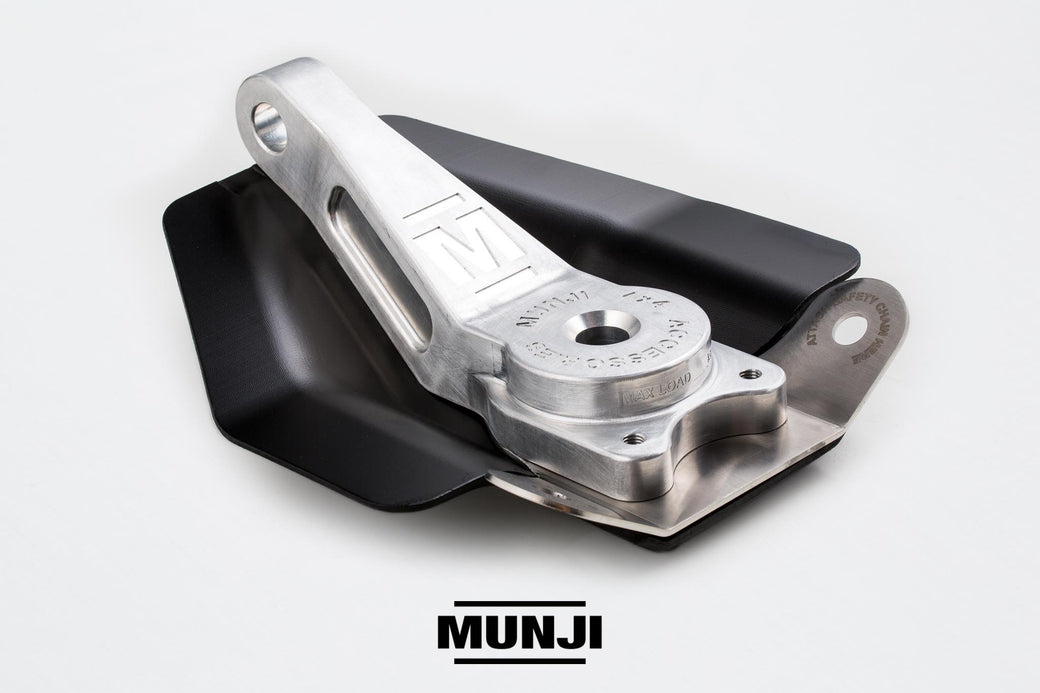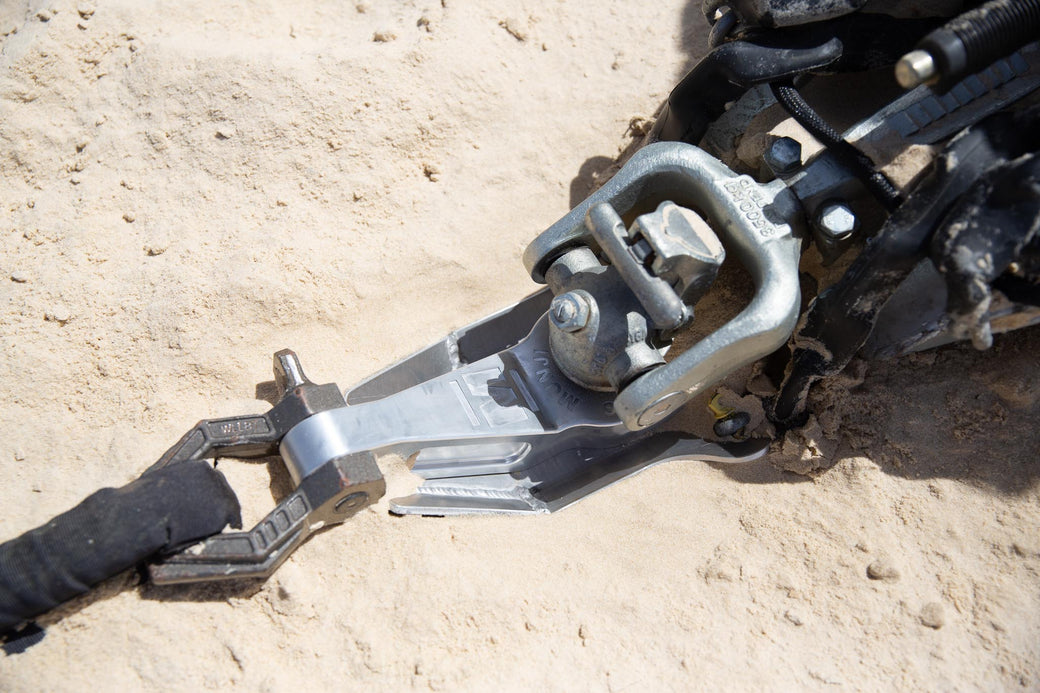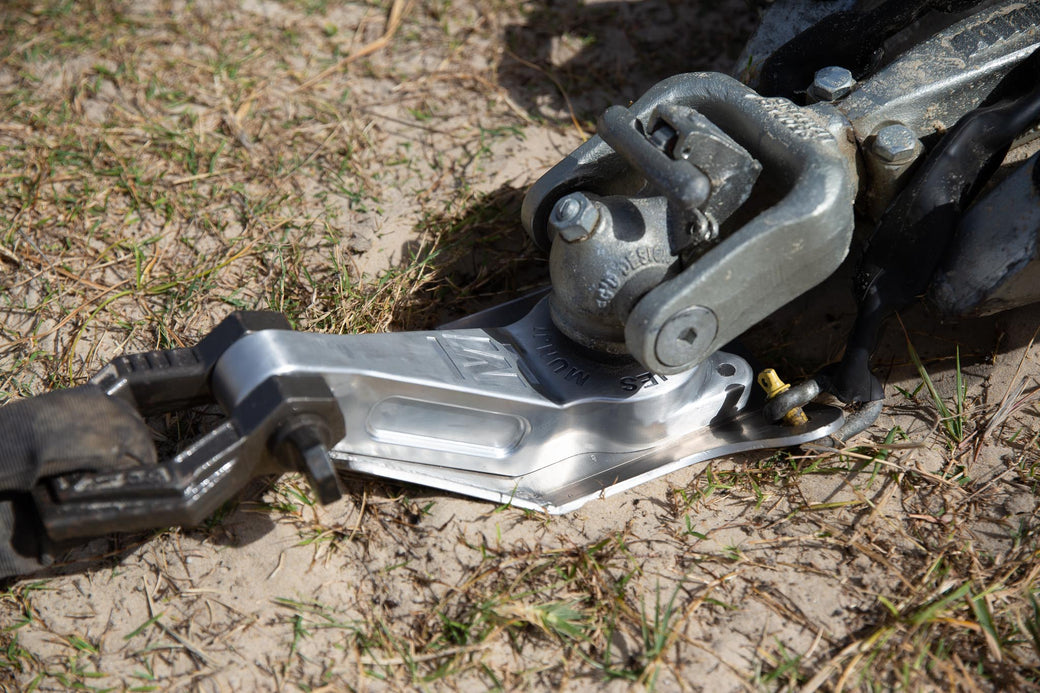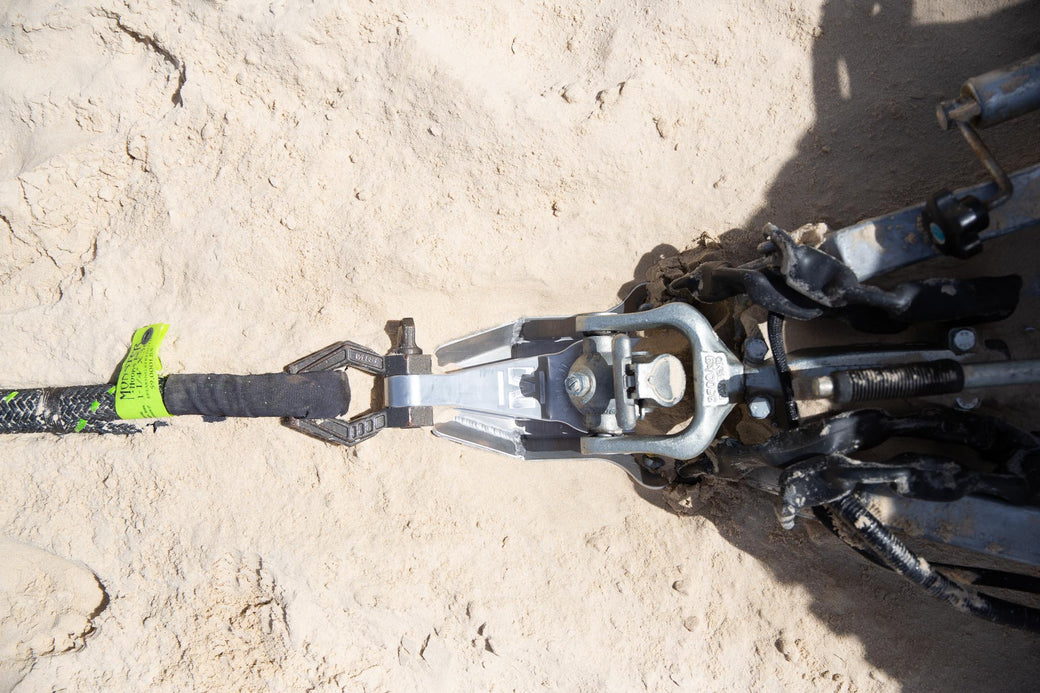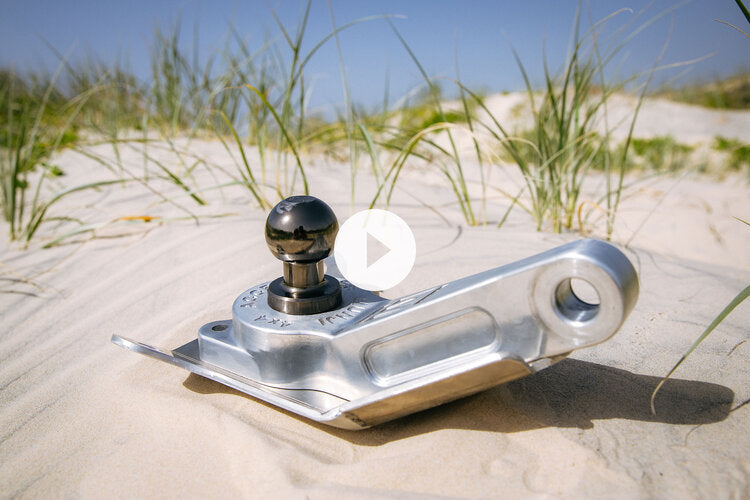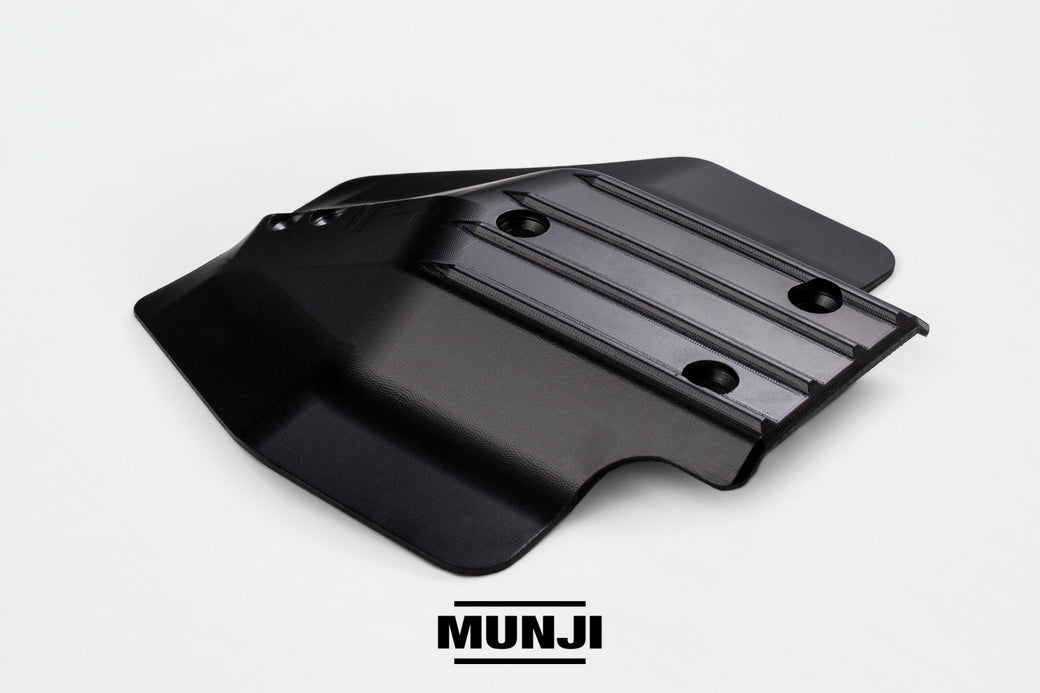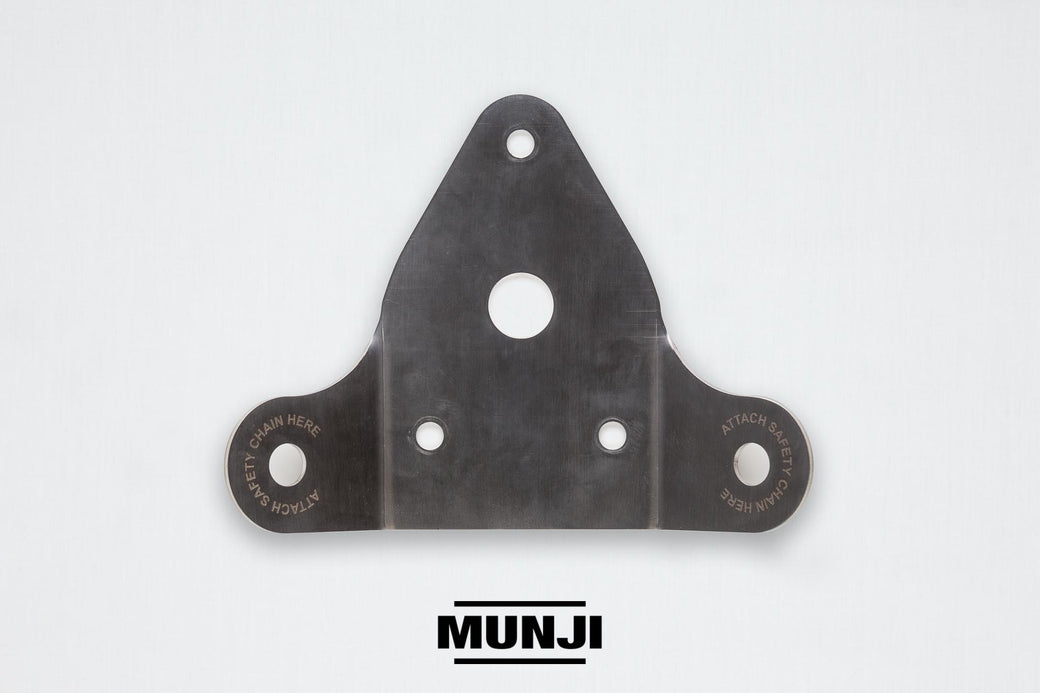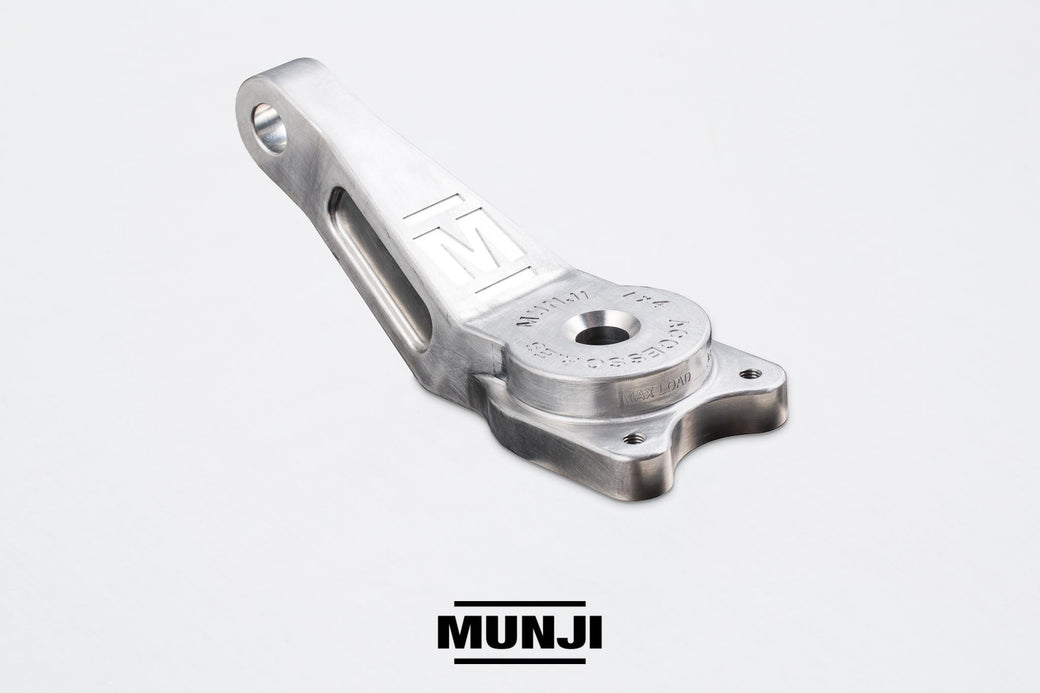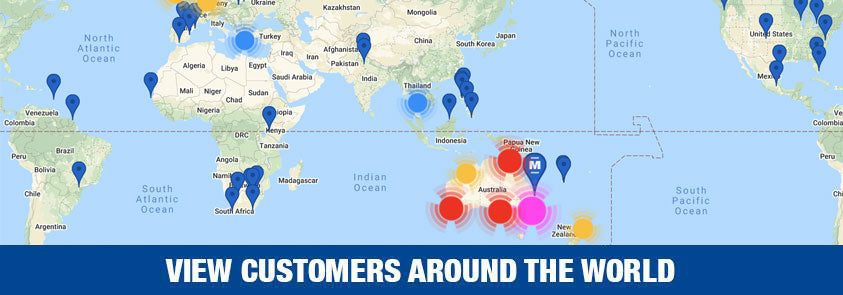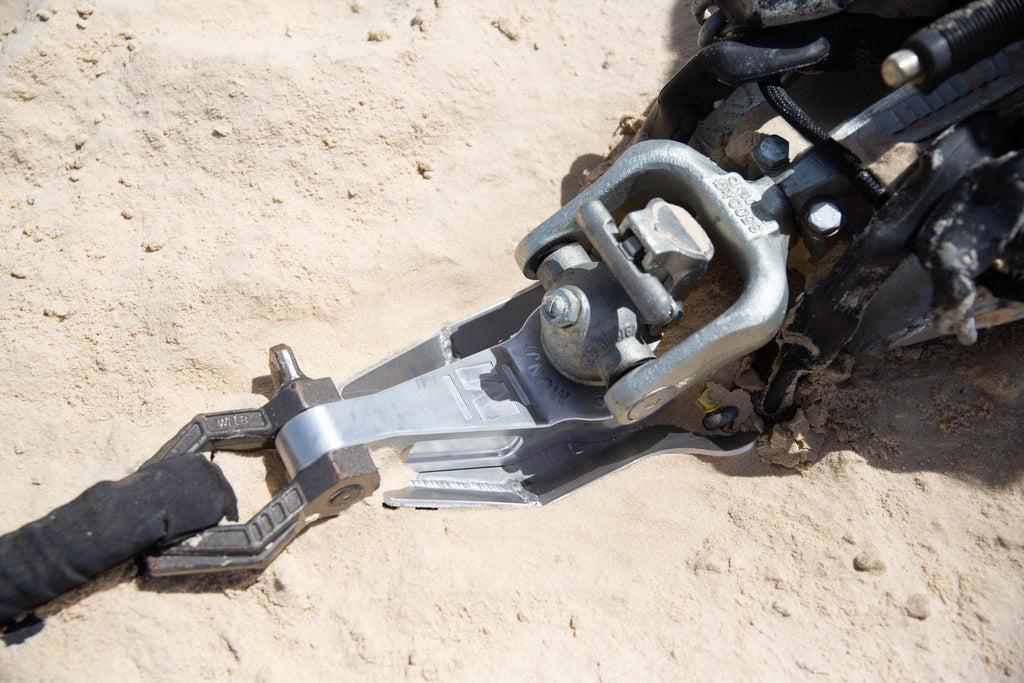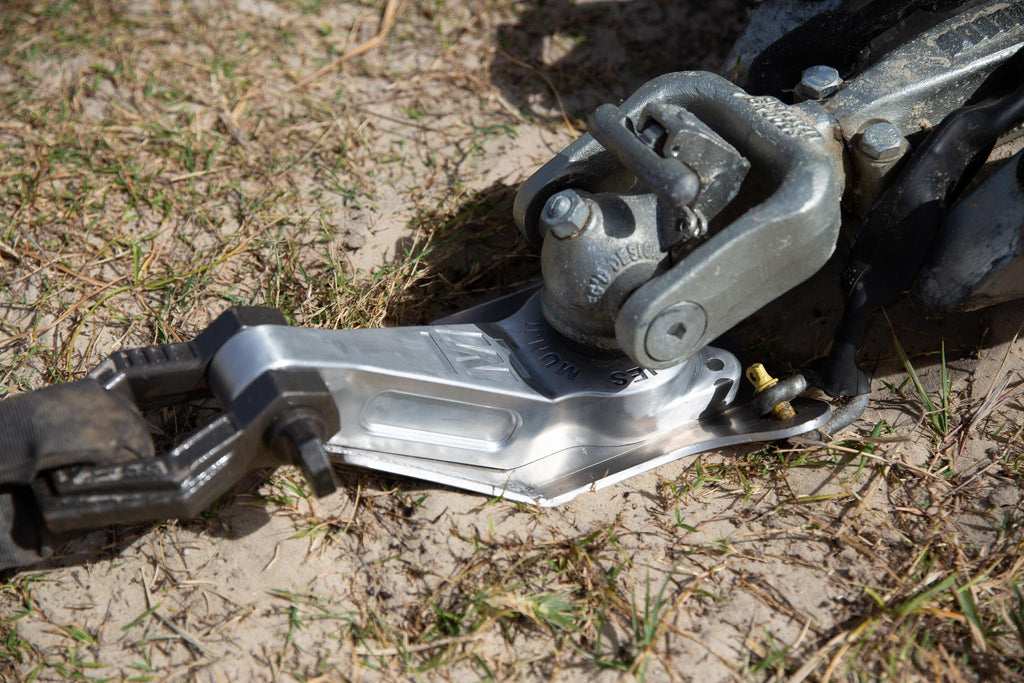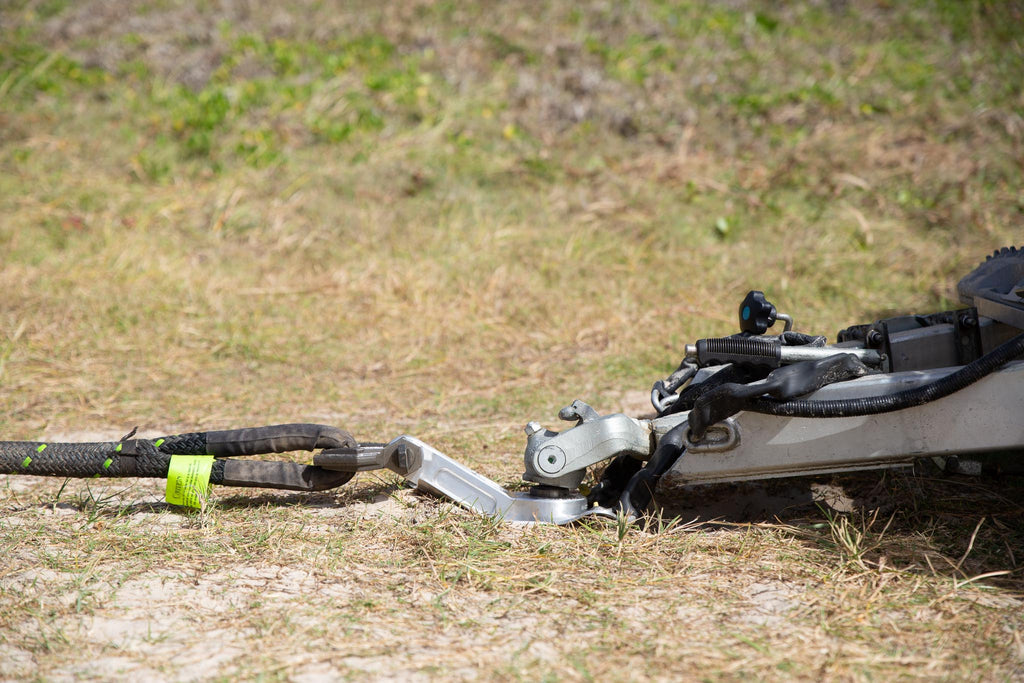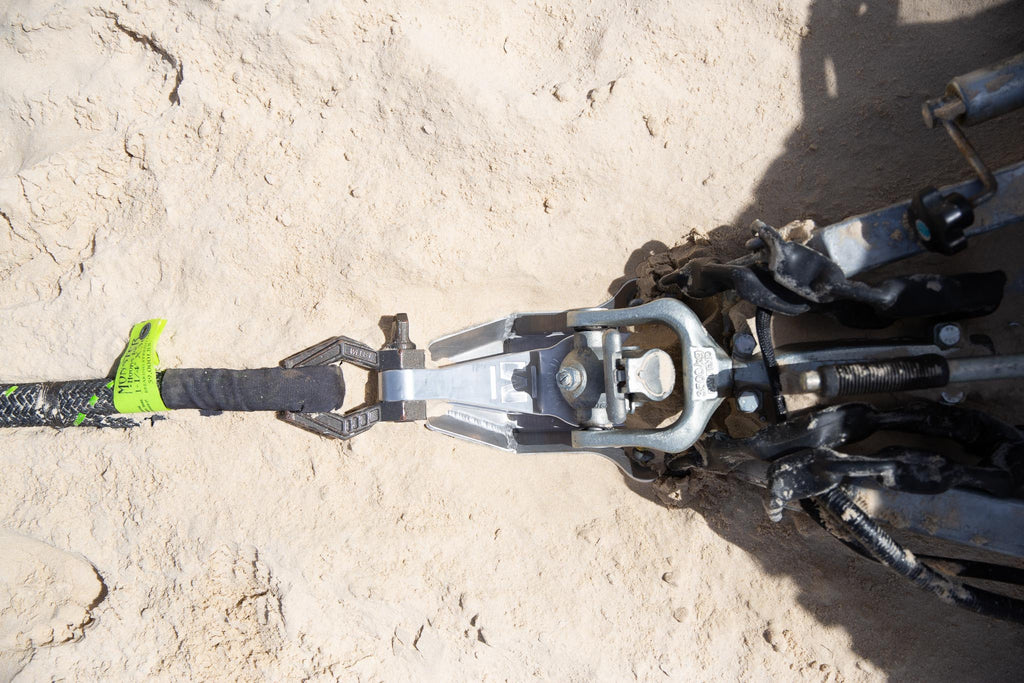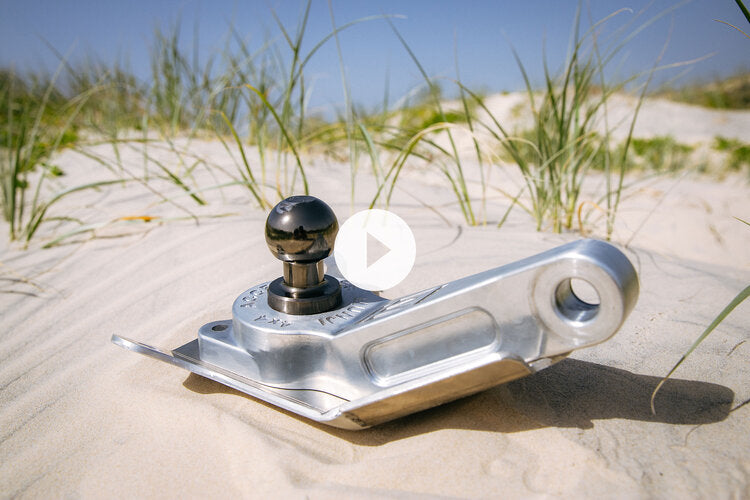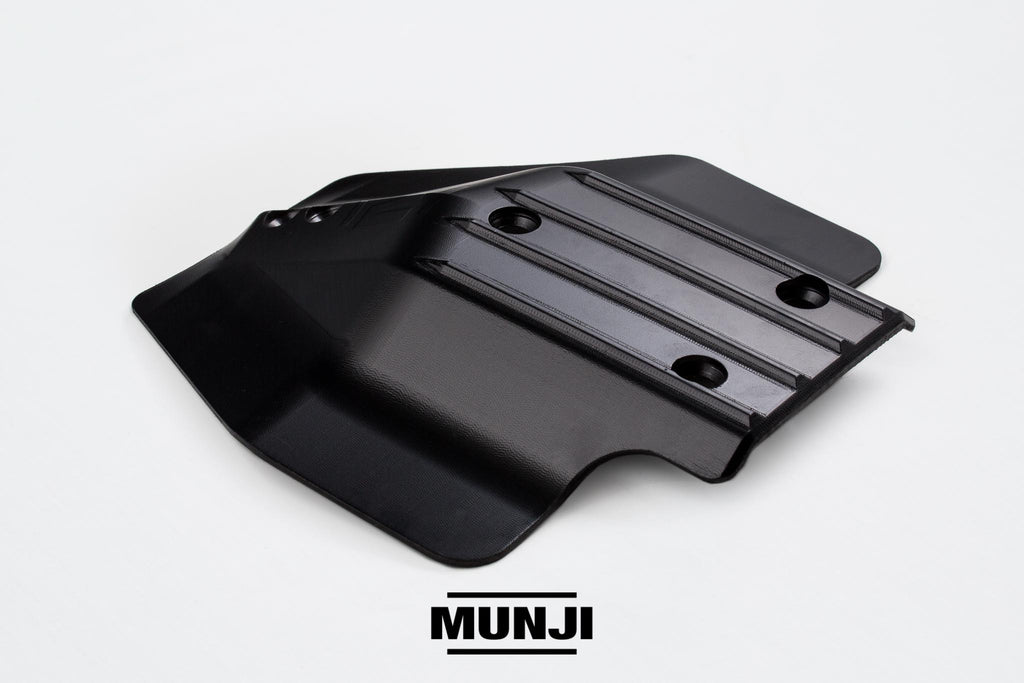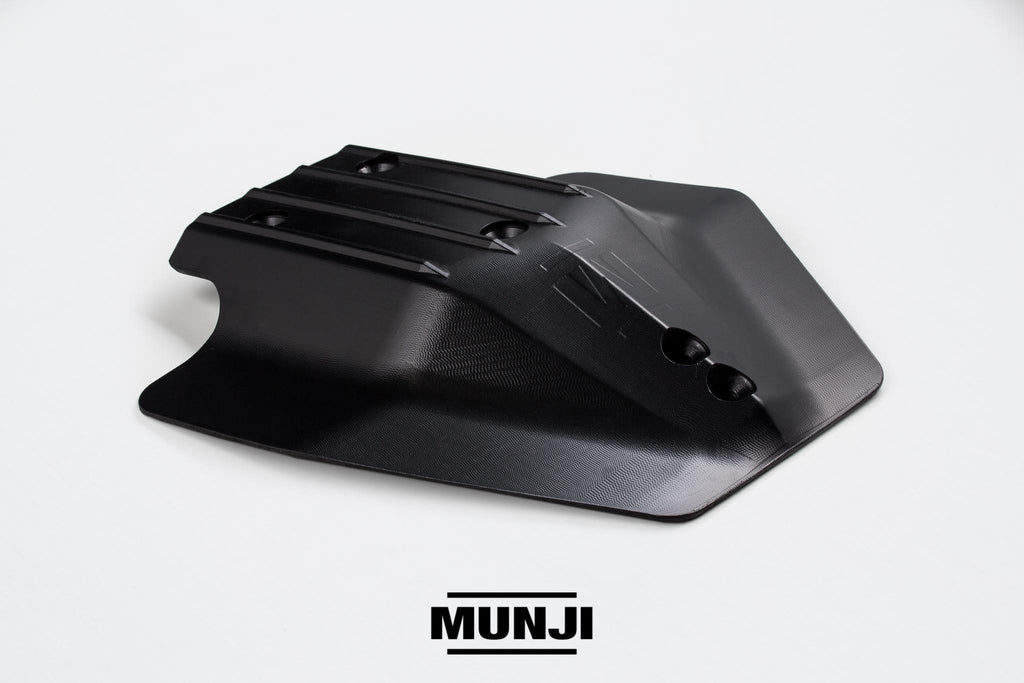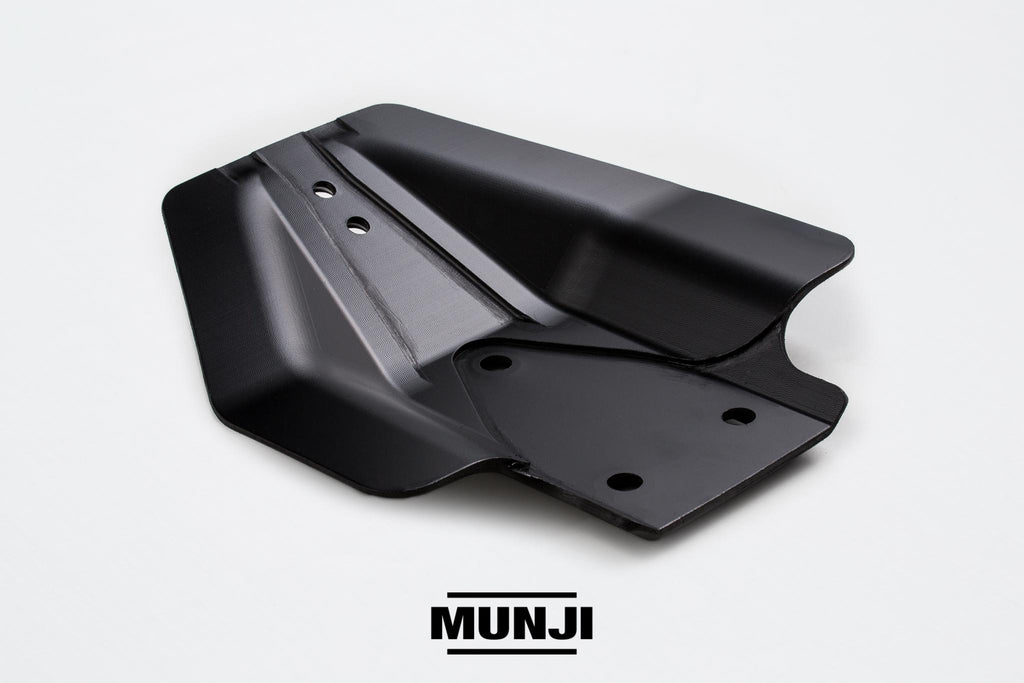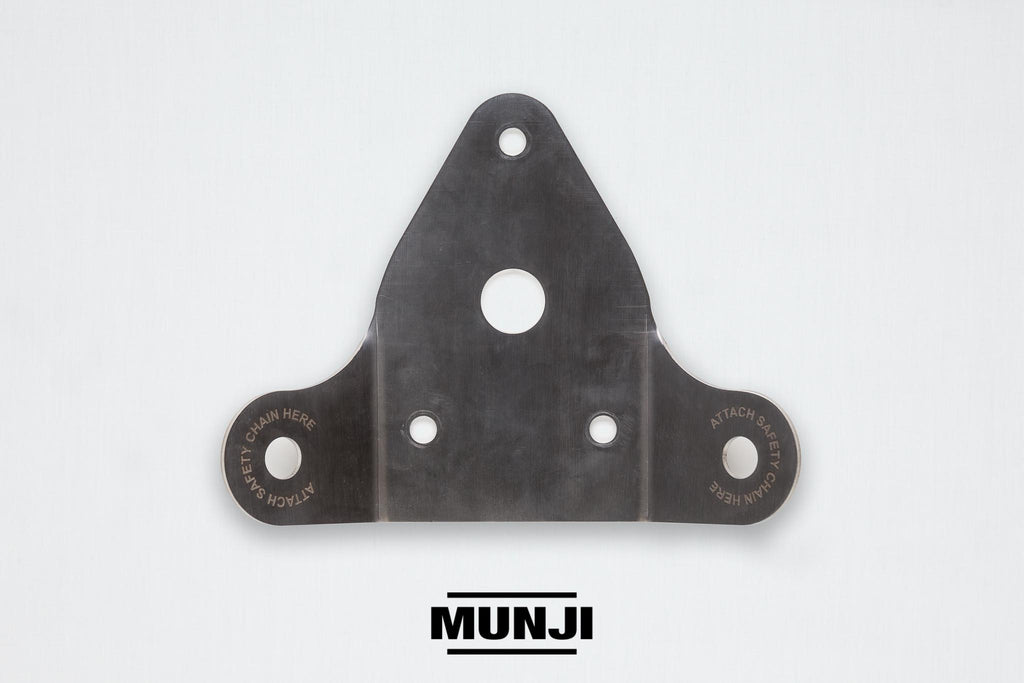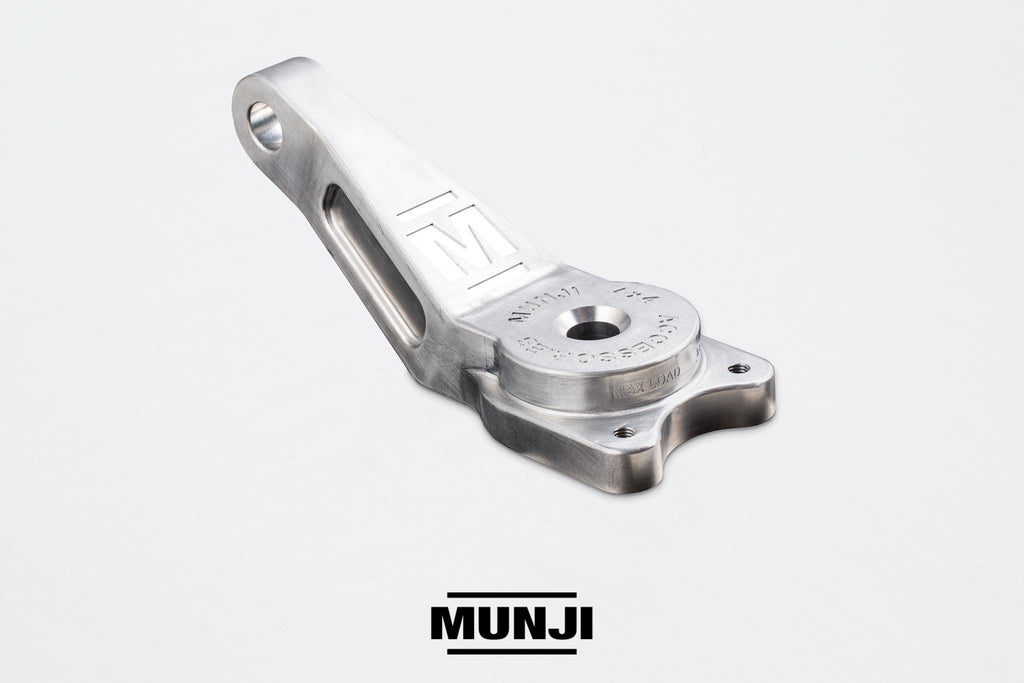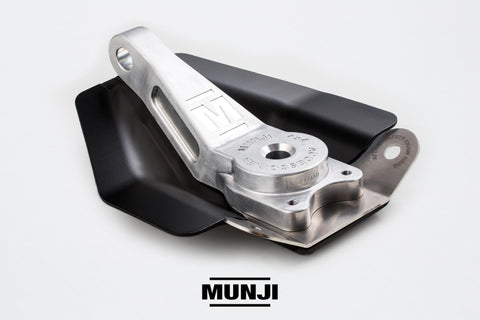Munji Trailer Recovery Link
SKU: TRL
COMING SOON
What is this and what are the benefits?
Part description
In situations where a vehicle is in tow of a trailer and the vehicle loses traction due to the weight and drag of the trailer, this Munji Trailer Recovery Link allows for the vehicle to be disconnected from the trailer and moved to more stable ground and reattach with a strap, rope or chain. This can be easily achieved with one person and one vehicle. The recovery can be done by winch or inline towing. The trailer will simply follow the direction of pull, so if the situation is very slippery for a long period, the recovery on the trailer can continue further while the vehicle has momentum including turning corners.
This is a linkage to aid recovery/tow of a trailer in situations where a trailer has or can get the towing vehicle stuck. The Munji Trailer Recovery Link is the structural link in which the recovering vehicle is attached to the trailer via strap, rope or chain. This linkage has a built-in slide/skid to drag the trailer along any surface safely. The linkage is attached to the trailer coupling with a matching attachment to suit the trailer coupling. The linkage can fit all styles/brands of trailer couplings. Safety chain provisions from trailer are included as secondary safety device.
The linkage has a mounting point at the front to fit a shackle whether soft of hard shackle, it will fit even the largest of the Monster Hooks version of the Reaper Shackle which is rated to 8ton. This linkage is being tested for its SWL and is designed to pull a trailer out of the dangerous area.
The shackle is where the strap is to be connected to the recovering vehicle. This means of attachment allows for the Munji Trailer Recovery Link to pivot with the direction of pull which also helps to direct the trailer being recovered. Because the Linkage is attached to the trailer by the original tow coupling, this allows for a direct pull of the trailer by the strongest point of the draw bar (located on the forward most part of the trailer) and the most forward point to minimise the weight on the Linkage which assists in the manoeuvrability during the recovery.
Attaching to the original coupling allows for the Linkage to move freely over rough articulated surfaces as well as keeping solid direction/steer while being pulled, this is because of the position of the shackle and the coupling attachment to the trailer being at equal line of pull.
This linkage with the skid plate acts like that of a boat hull, as surface area and angle provide lift to prevent the draw bar from digging into the ground while the recovery is in progress. This planning surface also allows for a long-distance recovery and high speed pulling without risk of the trailer running away from the direction of the recovering vehicle, also allows for stop/start motion and alterations of speed without effects on the stability of the car or trailer. Another important part of the slide position is; as it sits the draw bar lower and almost on the ground, it acts as a break so the trailer will slow rapidly as the tension is lessened from the recovery strap. In the case of emergency where the recovering vehicle was to tow at high speed and have to brake quickly, the Munji Trailer Recovery Link will react to the loss of tension and skid sideways and digging into the ground and slow the trailer rapidly to help prevent a run-away trailer.
On the skid plate there are holes to saddle the safety chains from the trailer, those that are normally secured to the tow bar on the vehicle. This allows an even greater means of safety giving 2 or 3 points of security between the trailer and linkage.
Key features
- Patented design.
- Load rated linkage.
- Body of the linkage will fit all types of male couplings (to suit trailer coupling).
- Alloy construction for weight reduction and longevity.
- Replaceable Plastic skid plate designed to displace debris and deflect over and around obsticals.
- Stainless steel safety chain plate for longevity, strength and rust prevention.
- Tow shackle hole is large with not sharp edges to fit large D-Shackles or soft shackles.
- 2x Safety chain holes to act as a secondary fail-safety in case of accidental coupling detachment.
- Recessed underbody to allow for securing nut to be clear of skid plate.
- Angle of forward skid plate and body if to create lift like that of a boat hull, this helps to keep the draw bar and coupling above the ground surface.
- The front of the linkage is set to be level to the pull height of the male coupling attachment and allow full articulation of the trailer coupling.
Destructive Testing has been conducted, for further information, please see this post - https://munji.com.au/blogs/news/munji-trailer-recovery-link-destructive-test-results
Points of difference
This is different to anything else on the market because this is a load rated point of recovery for a trailer.
Connection to the trailer
The Munji Trailer Recovery Link has a load rated point at the front where a shackle can be attached to a strap, rope or chain to a recovering vehicle. The trailer is connected to the Linkage with the use of a matching male attachment to the female coupling on the draw bar. Trailers are connected to a car by the means of a load rated female coupling that is mounted on the front of the draw bar of the trailer, the forward most point, this rests over and holds onto the male attachment on the tow bar of a vehicle. The Linkage also has holes on the skid plate to attach the safety chains from the draw bar, all trailers have at least 1 safety chain.
Current market trailer recovery options
Without the Trailer Recovery Linkage, the current options to tow a trailer out of a bogged situation are:-
- Recover the vehicle with the trailer still attached. This requires another vehicle, which is not bogged, to physically pull both the vehicle and trailer out of the bogged situation. This is additional weight and, in some cases, requires two vehicles to pull due to the dead weight a trailer can cause when still attached to a vehicle.
- The trailer is detached from the vehicle in order to pull the vehicle out first, then attempts can be made to pull the trailer out separately. If bogged in sand, near tidal water this can result in the trailer being lost as it is no longer attached to the vehicle. If the trailer is dragged out separately, the jockey wheel cannot support the front of the trailer as it will bog into the surface, and the jockey wheel will collapse under the force of the tow.
With the jockey wheel away, the coupling at the front of the draw bar of the trailer digs into the surface and continues to become worse as the trailer is attempted to be dragged out of the situation.
There is no safe pulling point on the front of a standard trailer in order to attach a rope, chain or similar to drag the trailer out, meaning a potential detachment of the tow rope, due to damage or breakage of the connecting point (as it is not load rated for towing).
The front draw bar of the trailer rests on the Munji Trailer Recovery Link, allowing for it to skid along the surface, without damage to the draw bar, or trailer coupling, as the trailer is being towed out of the dangerous situation. This also keeps the coupling clean of any debris, allowing for easy reattachment to the tow bar of the vehicle following the recovery.
By detaching the trailer, and for it to be able to be towed out separately, it means the vehicle can be towed out of the dangerous situation without the assistance of another person or another vehicle, as the use of a vehicle winch can be used. The Munji Trailer Recovery Link therefore allows for solo recovery of vehicle and trailer, rather than the driver needing to wait for assistance of other vehicles. It also allows for a safe means of towing a trailer out of a bogged situation, as the Munji Trailer Recovery Link makes use of the only load rated tow point on the front of a trailer, meaning chains, ropes etc, are securely attached to a load rated recovery link.
What testing of this product has been done?
Currently being load rated and tested under both non-destructive and destructive testing in the local facility in Queensland.
This means the Munji Trailer Recovery Link will be a load rated and RDA Approved part.
What couplings does this suit?
- DO35
- 50mm Ball
- Poly Block
- AL-KO Pin
- McHitch
Installation
Tools required – spanner
Installation Time - Approximately 2 minutes
Difficulty – Do it yourself
Below is the demo video:
Included in the kit:
Options:
- Skid plate: large/small or large and small (small plate is 304 stainless steel and the large plate is 6061 alloy.
- Plastic skid plate for those boat ramp launches
- Monster Hook Reaper Shackle 8T rated - Black or clear Powder coating
Options are to suit the trailers ball weight and surface being explored. Supply your own hitch pin/ball to suit your trailer coupling.
Postage
Standard postage Australia wide included in price.

